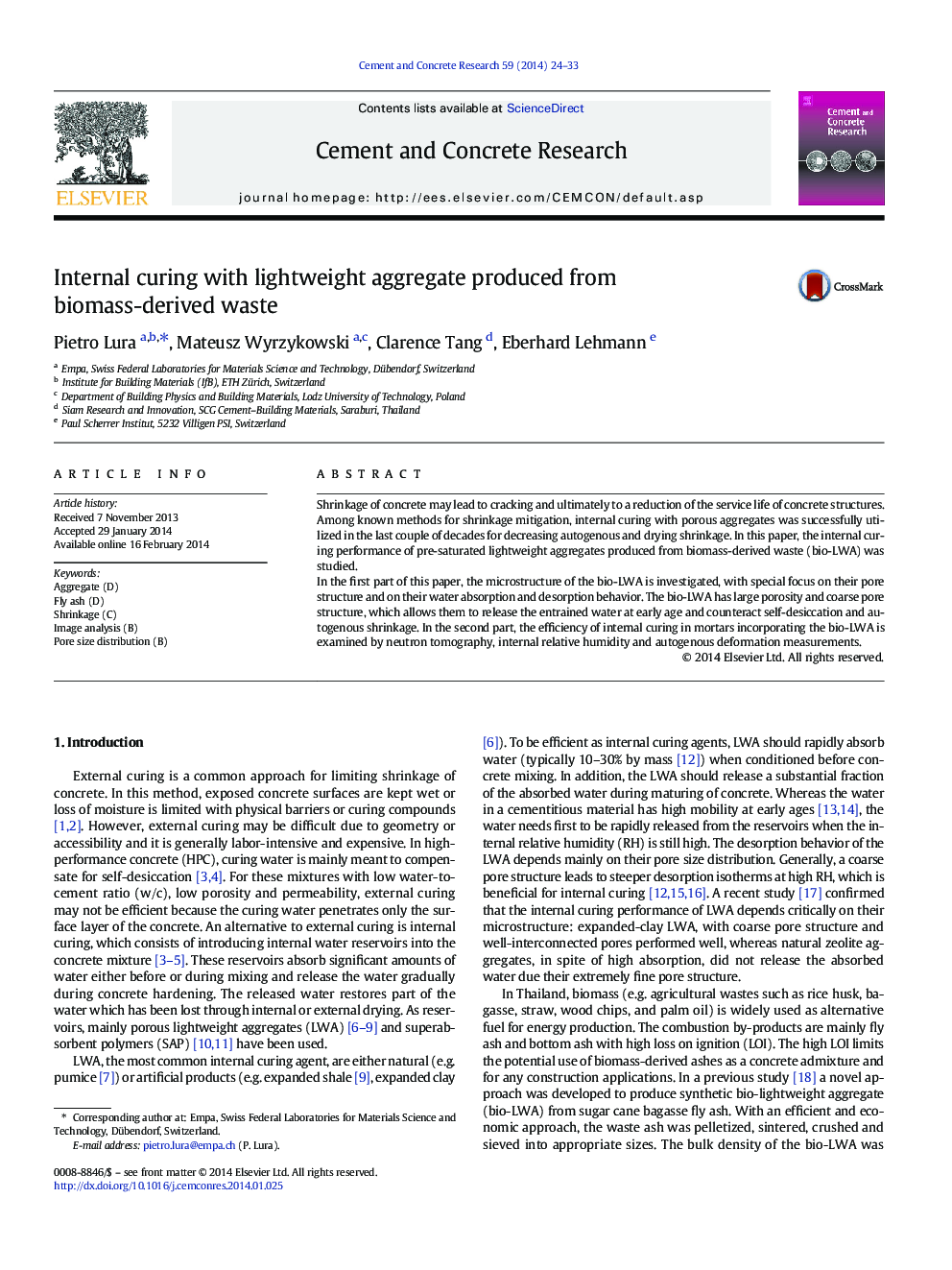| Article ID | Journal | Published Year | Pages | File Type |
|---|---|---|---|---|
| 1456320 | Cement and Concrete Research | 2014 | 10 Pages |
Shrinkage of concrete may lead to cracking and ultimately to a reduction of the service life of concrete structures. Among known methods for shrinkage mitigation, internal curing with porous aggregates was successfully utilized in the last couple of decades for decreasing autogenous and drying shrinkage. In this paper, the internal curing performance of pre-saturated lightweight aggregates produced from biomass-derived waste (bio-LWA) was studied.In the first part of this paper, the microstructure of the bio-LWA is investigated, with special focus on their pore structure and on their water absorption and desorption behavior. The bio-LWA has large porosity and coarse pore structure, which allows them to release the entrained water at early age and counteract self-desiccation and autogenous shrinkage. In the second part, the efficiency of internal curing in mortars incorporating the bio-LWA is examined by neutron tomography, internal relative humidity and autogenous deformation measurements.
